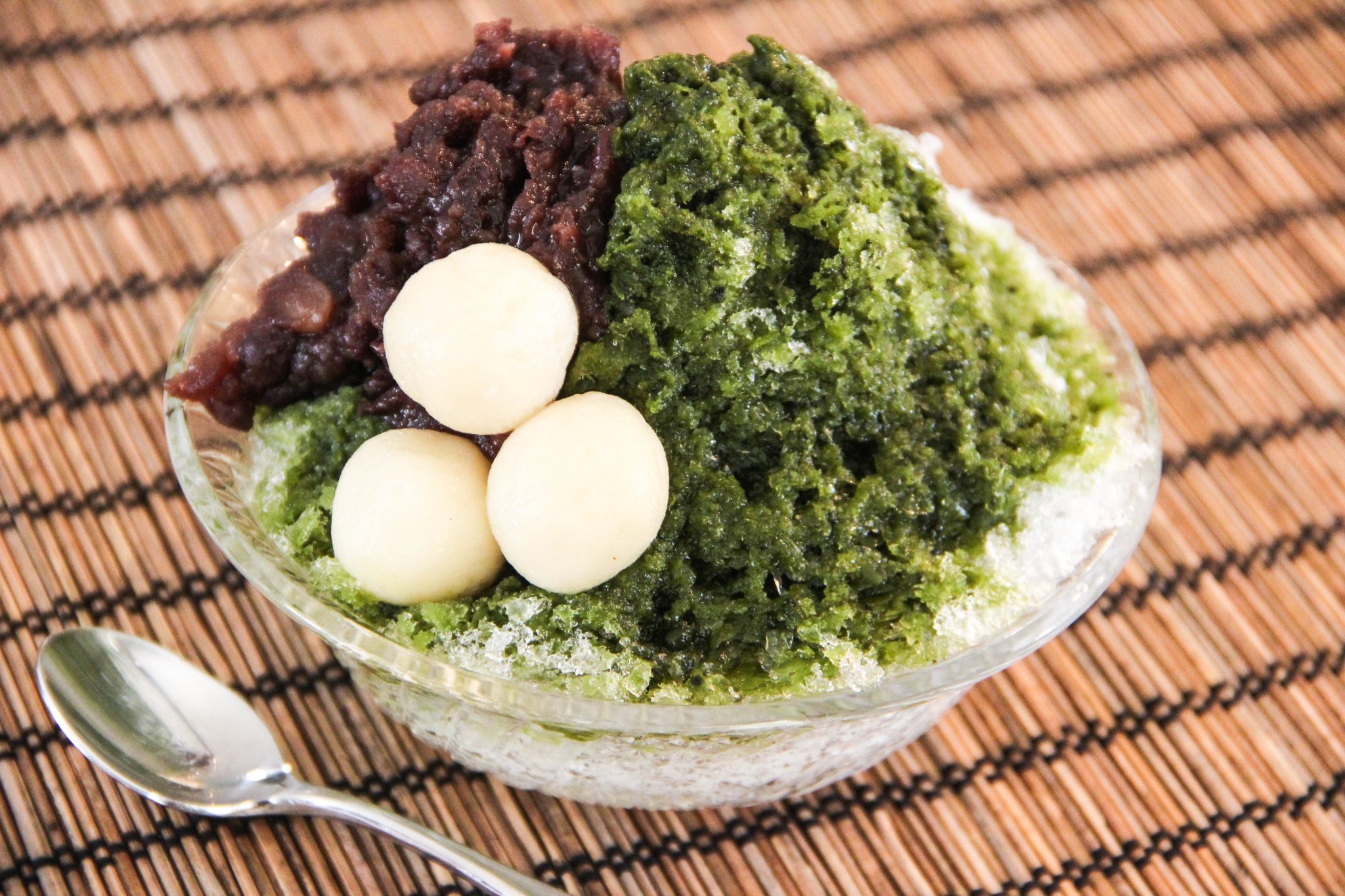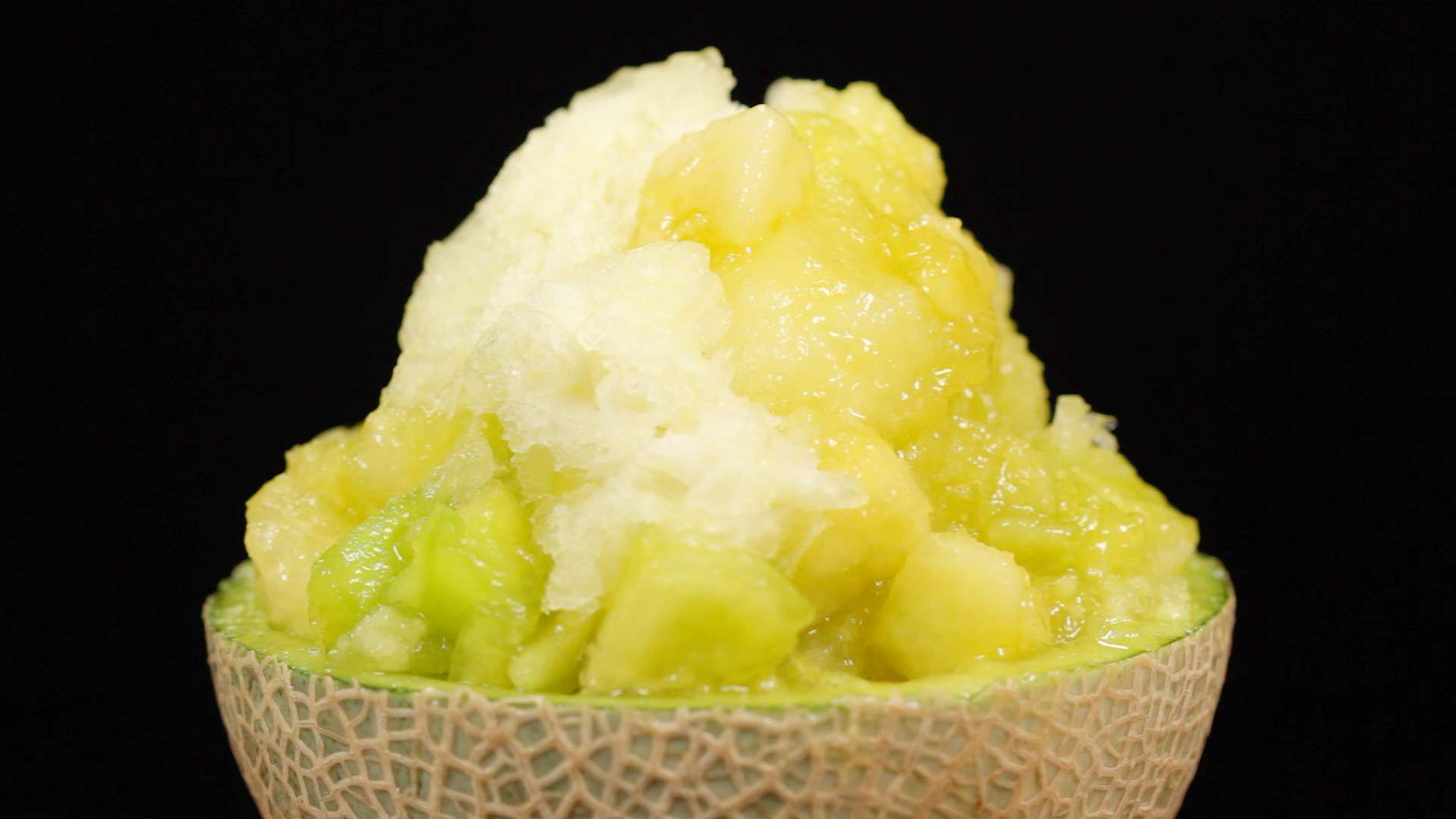Indulge in the delightful world of kakigori, a beloved Japanese shaved ice dessert that has captured hearts and palates worldwide. With its origins deeply rooted in tradition and its versatility that invites endless creativity, kakigori is a culinary masterpiece that embodies both simplicity and sophistication.
This guide will delve into the enchanting realm of kakigori, exploring its ingredients, techniques, and endless variations. Whether you’re a seasoned enthusiast or a curious novice, prepare to embark on a delectable journey that will leave you craving for more.
Introduction
Kakigori, a beloved Japanese shaved ice dessert, has captured the hearts of sweet enthusiasts worldwide. Its origins can be traced back to the Heian period (794-1185), when courtiers enjoyed shaved ice flavored with fruit juices and sweet syrup. Today, kakigori remains a popular summer treat, with countless variations and toppings available to satisfy diverse palates.
The art of crafting kakigori involves shaving a block of ice into delicate, fluffy flakes. These flakes are then topped with a variety of syrups, condensed milk, or fruit, creating a refreshing and customizable dessert.
Ingredients
The essential ingredients for kakigori are:
- Ice: The quality of the ice plays a crucial role in the texture and flavor of the dessert. Pure, clear ice produces the best results.
- Syrups: A wide range of syrups can be used, including fruit-flavored syrups, condensed milk, or matcha tea syrup.
- Toppings: Toppings such as fresh fruit, mochi, or red bean paste add extra flavor and texture to the dessert.
Techniques
The technique of shaving the ice is essential to achieving the perfect kakigori texture. Traditional Japanese kakigori machines use a hand-cranked blade to create fine, fluffy flakes. Electric shavers can also be used, but they may not produce the same delicate texture as hand-shaved ice.
Once the ice is shaved, it is important to pack it into the serving bowl tightly to prevent it from melting too quickly. The syrups and toppings are then added to create a visually appealing and flavorful dessert.
Ingredients
Kakigori’s simplicity and refreshing nature lie in its few, carefully chosen ingredients. Let’s delve into each component and understand their significance in creating the perfect kakigori experience.
The foundation of kakigori is, of course, ice. But not just any ice will do. The type of ice used directly impacts the texture and flavor of the final product. Traditionally, natural ice harvested from pristine mountain springs or lakes was preferred for its purity and lack of impurities.
However, in modern times, high-quality machine-made ice is commonly used, ensuring consistency and availability.
Types of Shaved Ice
There are three main types of shaved ice commonly used for kakigori:
- Fine/Powdery Snow: This type of shaved ice resembles freshly fallen snow, with a light and fluffy texture that melts in your mouth. It is the most popular choice for kakigori, as it allows the flavors of the syrup and toppings to shine through.
- Medium Shaved Ice: This type of shaved ice has a slightly coarser texture, with small, irregular flakes. It provides a nice balance between texture and flavor absorption, making it a versatile choice for different toppings and syrups.
- Coarse Shaved Ice: This type of shaved ice has large, chunky flakes that provide a satisfying crunch. It is often used for kakigori topped with heavier ingredients, such as mochi or fruit.
The choice of shaved ice depends on personal preference and the desired texture of the kakigori.
Choosing and Preparing Ingredients
In addition to ice, kakigori typically includes a flavored syrup or sauce, and a variety of toppings. Here are some tips for choosing and preparing these ingredients:
- Syrups and Sauces: A wide range of syrups and sauces can be used for kakigori, from classic fruit flavors like strawberry and lemon to more unique options like green tea and black sesame. Choose high-quality syrups and sauces made with real fruit or natural ingredients.
- Toppings: Toppings add texture, flavor, and visual appeal to kakigori. Common toppings include fresh fruits, mochi, red bean paste, and sweetened condensed milk. Choose fresh, ripe fruits and high-quality toppings to ensure the best flavor.
Syrups and Toppings
Syrups and toppings play a crucial role in enhancing the flavors and textures of kakigori, creating a delightful sensory experience. Various syrups, ranging from classic to unique flavors, are used to infuse sweetness and complexity into the shaved ice. Popular toppings add visual appeal, textural contrast, and additional flavors, transforming kakigori into an irresistible treat.
Syrups
A wide variety of syrups are used to flavor kakigori, each contributing its own distinct taste and aroma. Some of the most commonly used syrups include:
- Kuromitsu (Black Sugar Syrup): This classic syrup is made from dark brown sugar and water, simmered until it thickens. It has a rich, molasses-like flavor with a hint of smokiness.
- Matcha Syrup: This syrup is made from finely ground green tea powder mixed with sugar and water. It has a vibrant green color and a distinctive earthy, slightly bitter flavor.
- Strawberry Syrup: This syrup is made from fresh or frozen strawberries, sugar, and water. It has a bright red color and a sweet, tangy flavor.
- Mango Syrup: This syrup is made from fresh or frozen mangoes, sugar, and water. It has a vibrant yellow-orange color and a sweet, tropical flavor.
- Umeboshi Syrup: This syrup is made from pickled umeboshi plums, sugar, and water. It has a reddish-brown color and a tart, salty flavor.
Toppings
A variety of toppings can be added to kakigori to create a visually appealing and texturally interesting dessert. Some of the most popular toppings include:
- Condensed Milk: This thick, sweet milk adds a rich, creamy flavor to kakigori.
- Fruits: Fresh or frozen fruits, such as strawberries, mangoes, bananas, and blueberries, add a burst of sweetness and freshness.
- Mochi: These soft, chewy rice cakes add a unique texture and a slightly sweet flavor.
- Azuki Beans: These sweet red beans add a pop of color and a nutty flavor.
- Shiratama Dango: These small, white dumplings made from glutinous rice flour add a chewy texture and a slightly sweet flavor.
Creating a Balanced Combination
When combining syrups and toppings for kakigori, it is important to create a balanced and visually appealing composition. Here are a few tips:
- Start with a Base Syrup: Choose a syrup that will provide the main flavor profile for your kakigori. This could be a classic syrup like kuromitsu or matcha, or a more unique flavor like strawberry or mango.
- Add Contrasting Flavors: To create a more complex flavor profile, add toppings that have contrasting flavors to the base syrup. For example, you could pair a sweet syrup like strawberry with tart fruits like raspberries or blueberries.
- Consider Texture: Toppings with different textures can add interest and depth to your kakigori. For example, you could combine chewy mochi with crunchy granola or crispy tempura flakes.
- Use Color to Your Advantage: The colors of your syrups and toppings can create a visually appealing dessert. Try to use a variety of colors to make your kakigori look more vibrant and inviting.
Techniques
Mastering the art of kakigori involves developing precise techniques for shaving ice, crafting flavorful syrups, and assembling the dessert with finesse.
Shaving Ice
The key to creating a fluffy, melt-in-your-mouth kakigori is shaving the ice into a fine, delicate texture. Use a specialized ice shaver or a sharp knife to carefully shave the ice into thin, wispy flakes. Avoid crushing or grinding the ice, as this will result in a dense, unappetizing texture.
Crafting Syrup
The syrup is the heart of a kakigori dessert, providing flavor and visual appeal. To create a flavorful syrup, combine sugar, water, and your desired flavorings in a saucepan. Bring the mixture to a boil, then reduce heat and simmer until the syrup thickens and reaches your desired consistency.
Experiment with different flavor combinations, such as fruit juices, fruit purees, or spices, to create unique and delectable syrups.
Assembling Kakigori
Assembling a kakigori dessert is a delicate process that requires precision and care. Place a scoop of shaved ice into a bowl or glass. Drizzle the syrup evenly over the ice, ensuring that every bite is infused with flavor. Top with your desired toppings, such as fresh fruit, mochi, or condensed milk, to complete the experience.
Variations

Kakigori has numerous regional variations, each with unique ingredients and presentation styles. In Hokkaido, it’s often topped with condensed milk and red bean paste, while in Okinawa, it’s served with a sweet and tangy pineapple syrup. In recent years, innovative and modern takes on the classic kakigori have emerged, incorporating a wide range of flavors and ingredients.
Flavor Experimentation
Experimenting with different flavors and combinations is encouraged to create unique and exciting kakigori. Some popular flavor combinations include:
- Strawberry and matcha
- Mango and coconut
- Pineapple and passion fruit
- Kiwi and mint
Don’t be afraid to mix and match different syrups and toppings to create your own signature kakigori.
Presentation

Presentation plays a crucial role in enhancing the overall appeal of kakigori. A visually stunning presentation can elevate the dessert’s aesthetic value and entice customers. To achieve an eye-catching presentation, consider the following techniques:
Garnishes
Creative and visually appealing garnishes can transform a simple kakigori into a work of art. Some popular garnishes include:
- Fresh fruits, such as sliced strawberries, blueberries, or kiwi, add vibrant colors and a refreshing touch.
- Edible flowers, such as pansies or violets, provide a delicate and elegant touch.
- Mochi balls, chewy and sweet, add a playful and textural element.
- Sweetened red bean paste, a classic Japanese topping, offers a rich and creamy contrast.
- Whipped cream or ice cream, fluffy and airy, create a cloud-like effect.
Arrangement
The arrangement of kakigori in a bowl or on a plate is equally important. A well-arranged dessert creates a sense of balance and visual harmony.
- Symmetrical arrangement: Arrange the shaved ice in a symmetrical mound, with toppings and garnishes placed evenly on each side.
- Asymmetrical arrangement: Create a more dynamic presentation by arranging the shaved ice and toppings in an asymmetrical pattern, adding visual interest.
- Layered arrangement: Layer different flavors of shaved ice or toppings to create a colorful and visually striking effect.
Closure
As you venture into the realm of kakigori, let your imagination soar and experiment with different flavors and combinations. Embrace the joy of creating your own unique kakigori masterpieces, and share your creations with loved ones to spread the sweetness and delight.
Answers to Common Questions
What is the best type of ice to use for kakigori?
For the most authentic and fluffy kakigori texture, use finely shaved ice made from pure, high-quality ice blocks.
How can I create a syrup that is both flavorful and visually appealing?
Use fresh fruits, herbs, or natural flavorings to create vibrant and aromatic syrups. Experiment with different colors and consistencies to enhance the visual appeal.
What are some popular toppings for kakigori?
Condensed milk, fresh fruits, mochi, and azuki beans are classic toppings that add sweetness, texture, and visual interest to kakigori.
How can I experiment with different flavors and combinations?
Don’t be afraid to mix and match different syrups and toppings to create your own unique kakigori creations. Explore the possibilities and discover new flavor combinations that tantalize your taste buds.
